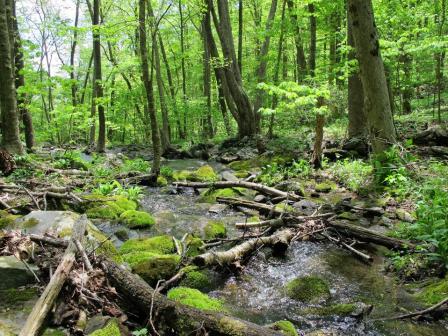Nonpoint Source: Forestry
 Forests can serve as buffers to runoff, reducing water quality impairments from nonpoint sources. Sources of nonpoint source (NPS) pollution associated with forestry activities include removal of streamside vegetation, road construction and use, timber harvesting, and mechanical preparation for the planting of trees. Road construction and road use are the primary sources of NPS pollution on forested lands, contributing up to 90 percent of the total sediment from forestry operations. In additon to other water quality impacts, an excessive quantity of sediment in a water body can reduce the ability of aquatic organisms to successfully live, forage, and spawn.
Forests can serve as buffers to runoff, reducing water quality impairments from nonpoint sources. Sources of nonpoint source (NPS) pollution associated with forestry activities include removal of streamside vegetation, road construction and use, timber harvesting, and mechanical preparation for the planting of trees. Road construction and road use are the primary sources of NPS pollution on forested lands, contributing up to 90 percent of the total sediment from forestry operations. In additon to other water quality impacts, an excessive quantity of sediment in a water body can reduce the ability of aquatic organisms to successfully live, forage, and spawn.
Harvesting trees in the area beside a stream can affect water quality by reducing the streambank shading that regulates water temperature and by removing vegetation that stabilizes the streambanks. These changes can harm aquatic life by limiting sources of food, shade and shelter, as well as decreasing areas suitable for species intolerant of warmer temperatures.
